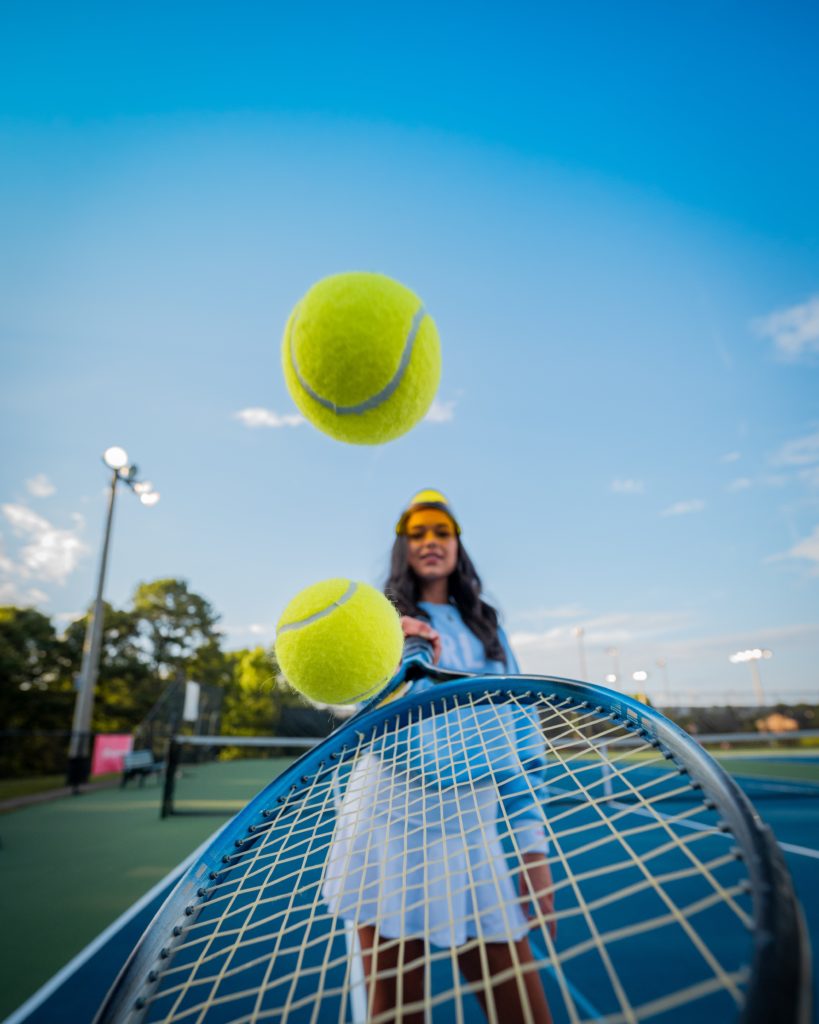
Prevention of Shoulder Injuries in Tennis: Strengthening. Part 1 of 2
HAPPY MEMORIAL DAY! You can tell that summer is in the air, not only by the arrival of the sunshine, warm air and longer days, but also by the beautiful sound of a tennis ball hitting a racquet hitting at Scranton Tennis Club and Birchwood Racquet and Fitness Club. So, get your racquets out and join the fun! However, take time to “tune up” in order to prevent injury, especially to the shoulder. In a sport that relies so heavily on the use of the shoulder, it is very common for tennis players to develop occasional shoulder pain or a more chronic problem such as shoulder rotator cuff tendinitis. That is exactly what happened to professional tennis star, Maria Sharapova and many others over the past few seasons.
For many, tennis is more of a seasonal sport. For example, in high school it is played in the fall for girls and spring for boys. In the off-season, a shoulder can lose much of its essential strength. This loss will result in a deconditioned shoulder at the start of the season and making it more susceptible to injury. Practicing with a deconditioned shoulder commonly results in sprain, strain and pain. Pain and weakness will significantly interfere with the ability to perform at a high level.
To prevent shoulder problems, one must participate in an exercise program specifically designed for tennis. A well-balance shoulder strengthening program includes rotator cuff and scapular (shoulder blade) muscle exercises, reeducation, biomechanics, and a stretching program pre and post hitting. This column will discuss some of these principles to properly prepare your shoulder for the tennis season and avoid injury.
STRENGTHENING EXERCISES FOR TENNIS
To avoid shoulder pain it is necessary to maintain shoulder strength. Stretching exercises are also important and will be discussed in next week in, Prevention of Shoulder Injuries in Tennis - Part II. Strengthening exercises need to concentrate on three groups of muscles: power muscles (the large muscles of the shoulder), shoulder blade stabilizer muscles (the muscles which stabilize the shoulder blade, and the all important rotator cuff muscles (the muscles which move the shoulder and control the cocking and follow through phases of the tennis stroke, while keeping the joint in proper position). Strengthening the power muscles of the shoulder is fairly easy; latissimus pull downs, pectoralis bench presses, and bicep curls will cover all bases. While these exercises are important in maintaining strength and power of the throwing shoulder, they are not as important as the exercises for the shoulder stabilizers and rotator cuff muscles.
PHOTO 1 - Rotator Cuff Internal Rotation (Tennis Forehand Stroke): Holding a light or medium resistance band, imitate a forehand stroke with slight bend in the elbow…can be performed with band tied to tennis racket.
PHOTO 2- Rotator Cuff External Rotation (Tennis Backhand Stroke): Holding a light or medium resistance band, imitate a backhand stroke with slight bend in the elbow. can be performed with band tied to tennis racket.
PHOTO 3- Latissimus Pull downs – Kneeling or sitting:
PHOTO 4- Bench Press - Lying on back with knees bent
PHOTO 5- Biceps Curls - Sitting or standing
Models: Katherine Weaver, SPT & Lauren Calvey
Visit your doctor regularly and listen to your body.
Contributor: Gary E. Mattingly, PT, PhD: Professor Emeritus, University of Scranton, Dept. of Physical Therapy
NEXT MONDAY – Read Dr. Paul J. Mackarey “Health & Exercise Forum” in the Scranton Times-Tribune. Part 2 “Prevention of Shoulder Injuries in Tennis”
This article is not intended as a substitute for medical treatment. If you have questions related to your medical condition, please contact your family physician. For further inquires related to this topic email: drpmackarey@msn.com
Paul J. Mackarey PT, DHSc, OCS is a Doctor in Health Sciences specializing in orthopaedic and sports physical therapy. Dr. Mackarey is in private practice and is an associate professor of clinical medicine at Geisinger Commonwealth School of Medicine.